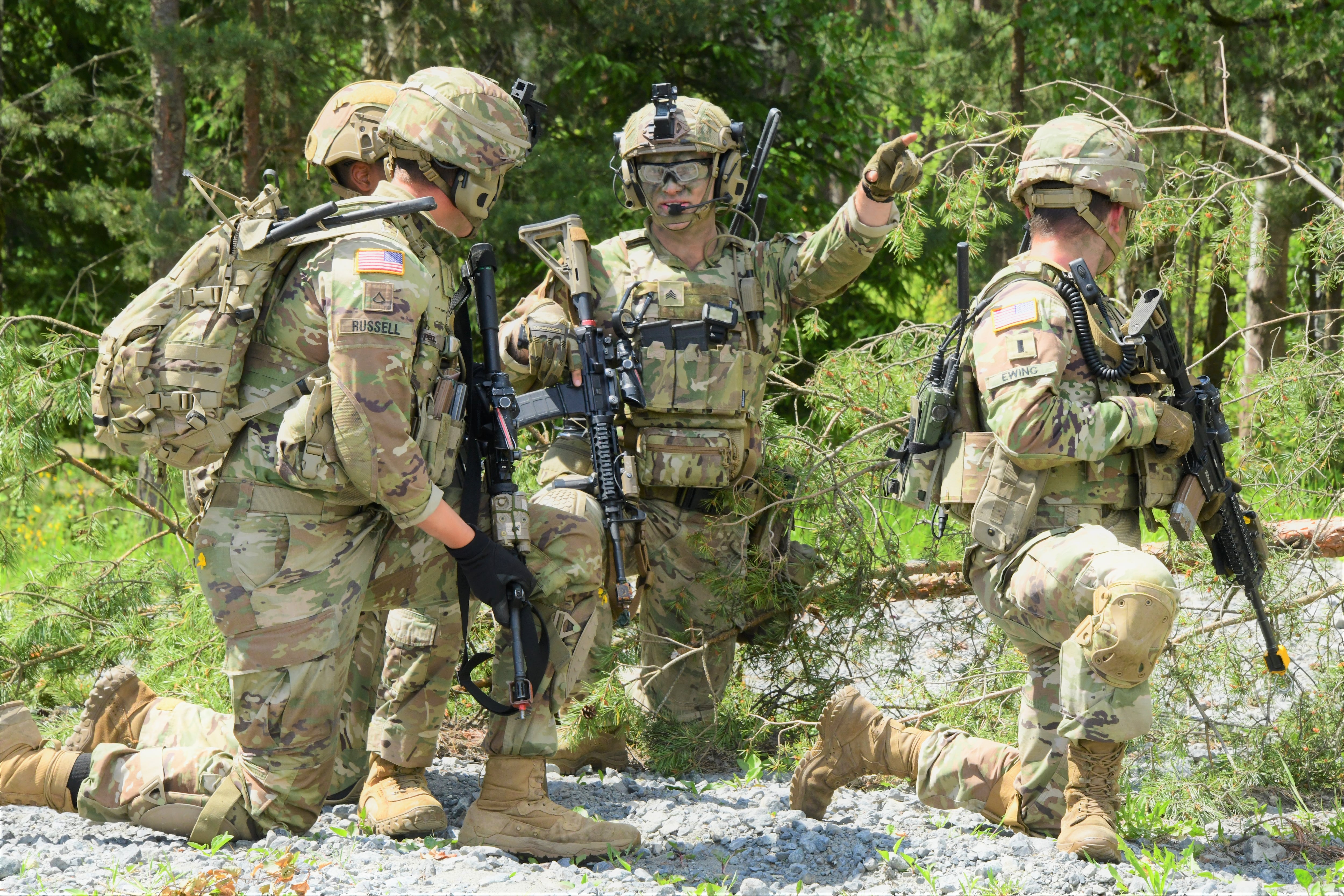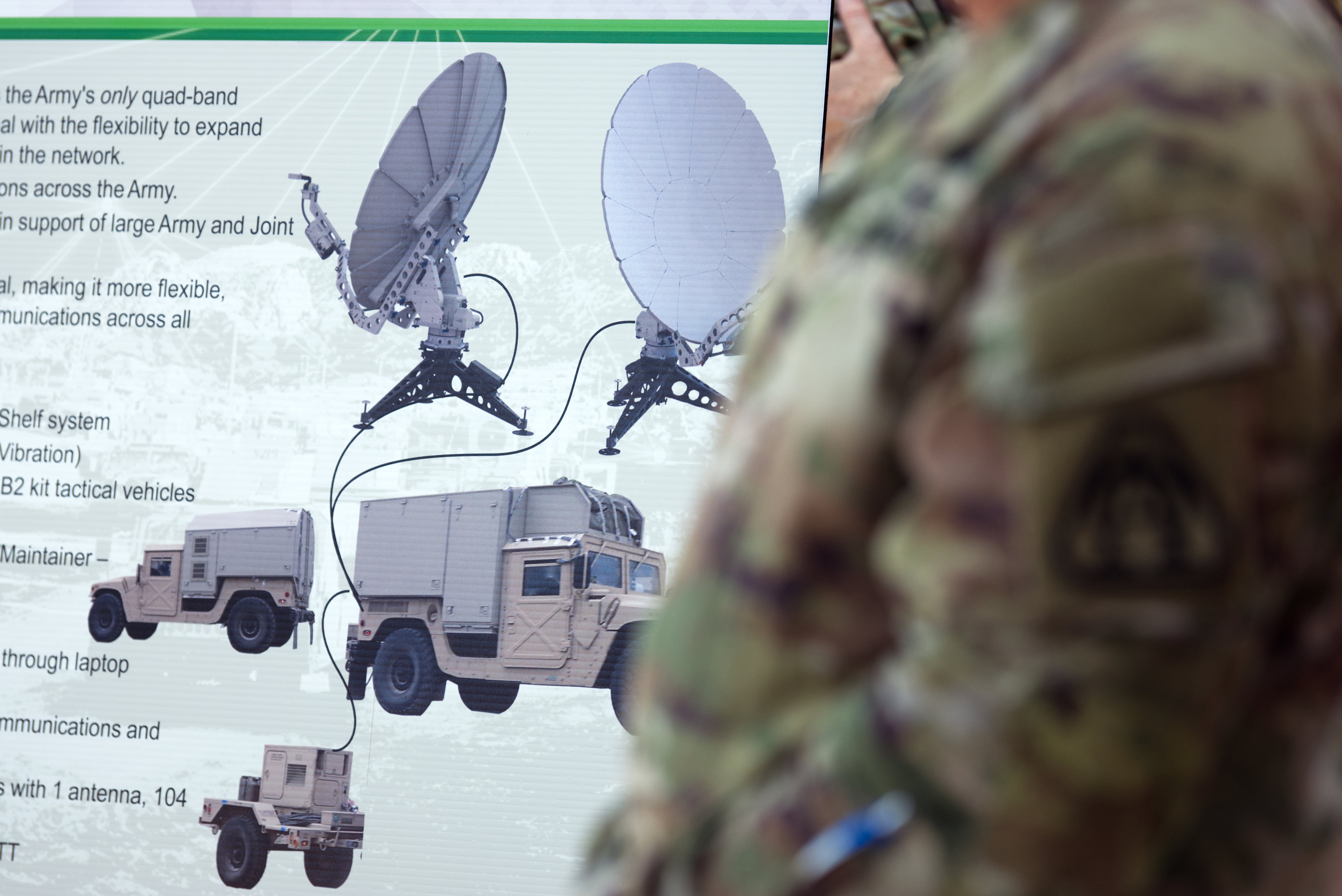WASHINGTON — The proliferation of battlefield data, the advanced technologies being built to decipher them and the need to communicate quicker than ever are steadily transforming how soldiers operate and how the military is assembled, according to the commanding general of the U.S. Army’s I Corps.
“What is also really, really interesting about our Army as we go forward in this data-centric environment is people are going to do different things. Organizations are going to change,” Lt. Gen. Xavier Brunson told reporters Oct. 10 on the sidelines of the Association of the U.S. Army annual conference.
“We’re going to start changing the way our organizations are organized — to use the same word, the way that they’re built — in order to take advantage of what we can do,” he said.
Whereas soldiers can be single-sport athletes now, Brunson said, a future defined by interconnectedness and digitization is full of decathletes.
“We’re not going to have just single-source people in the Army anymore,” he said. “We’re going to have people that are going to be multi-source, multi-path even, to do the things that we’re going to do in the future. And that ought to excite everybody.”
RELATED

To take full advantage of technologies being developed by Army entities such as the Program Executive Office for Command, Control and Communications-Tactical, or PEO C3T, soldiers will need to “know signal, they’re going to have to understand data, they’re going to have to understand data centricity,” Brunson said. “They’re going to have to understand the pathways that we’re operating off of.”
PEO C3T and the Network Cross-Functional Team, among others, are helping realize the Army’s network modernization goals. Upgrading digital infrastructure and ensuring connections can be made in even the most hostile environment are among the service’s most pressing priorities.
Every two years, the executive office rolls out upgraded networking kit known as capability sets. The effort kicked off in fiscal 2021, with additional goalposts planted in 2023, 2025 and 2027.
The first iteration focused on infantry. The second focuses on Strykers amid a return to the division as the unit of action. And the third, armor. Each builds upon the last, with extra attention paid to increased connectivity, survivability and mobility. The batches contribute to the concept of Joint All-Domain Command and Control, a Pentagon push to better connect forces across land, air, sea, space and cyber.
“What we’ve done in the past is we’ve defaulted to a guy like [Maj. Gen.] Jeth Rey and said, ‘I need to talk to such and such, I need to get this product from this place. It’s a 2 megabyte file, and I know you told me I can’t send it, but I need to do it, you go do that.’ And we went on and on and did our things,” Brunson said, referencing the director of the Network Cross-Functional Team. “Now I think, again, the onus is going to be on the actual user to understand what he’s a part of.”
Colin Demarest was a reporter at C4ISRNET, where he covered military networks, cyber and IT. Colin had previously covered the Department of Energy and its National Nuclear Security Administration — namely Cold War cleanup and nuclear weapons development — for a daily newspaper in South Carolina. Colin is also an award-winning photographer.





